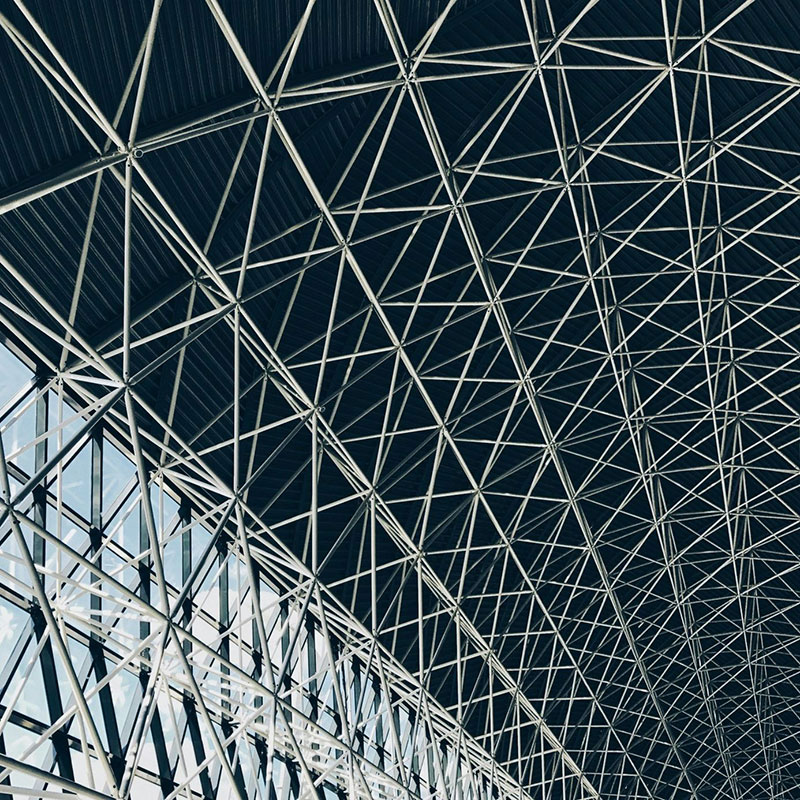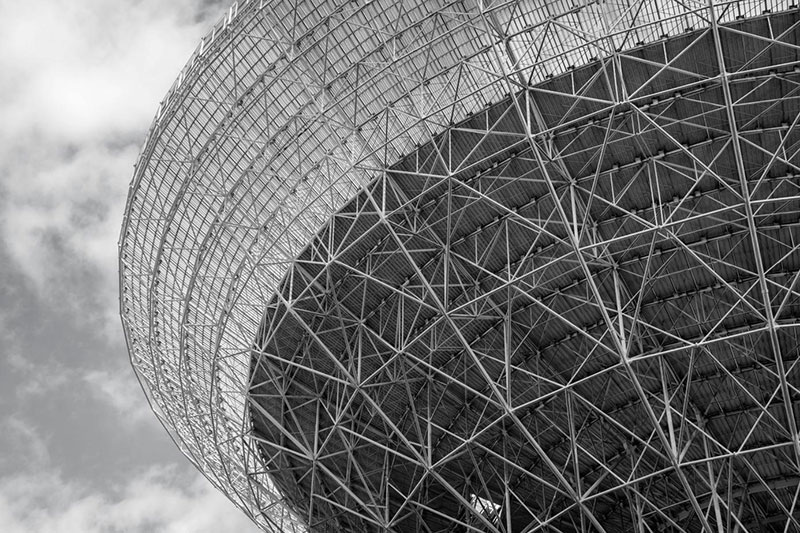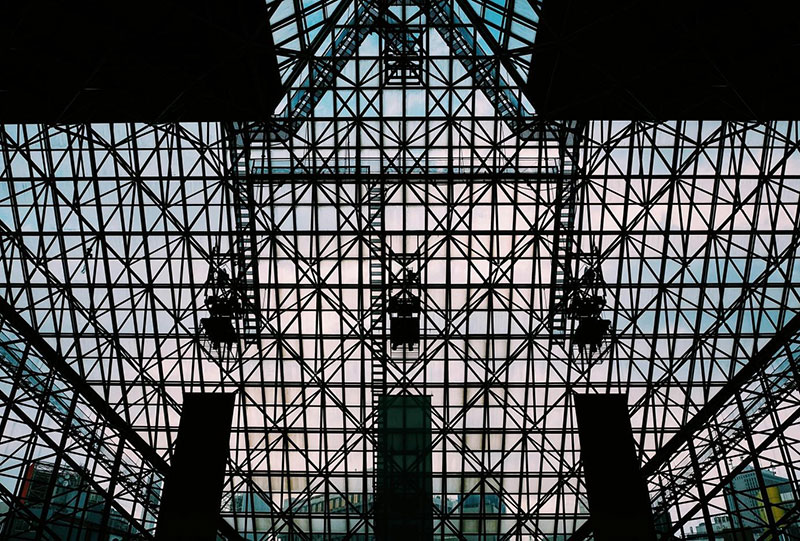7/24/2025
Over the past few years, the modular space truss system has had a significant impact on the steel construction industry by creating innovative disruptions in the way buildings are designed, manufactured, and built. This advanced technique combines high structural capacity with an efficient geometric design that allows buildings to have a wide open space with minimal material use and maximum structural integrity.

Construction professionals like engineers and architects are compelled by the system's ability to support large spans without any interior columns, which not only opens up more usable floor area but also enhances aesthetic possibilities. Modular space truss system is prefabricated, which makes it easier for the repeatable modules to be assembled with precision. This will speed up construction timelines and reduce labor work on the site.
From high-rise buildings and airport terminals to sports arenas and exhibition centers, modular space truss systems are widely used across architectural and industrial projects. They are particularly valuable in projects that require lightweight materials with great structural support, offering unmatched versatility and cost efficiency.1. Faster Construction Timelines
Modular space truss systems are prefabricated off-site in controlled settings. This fabrication can occur simultaneously with the foundation work, thus shortening construction timeline and avoiding delays caused by weather, labor shortage, and other issues. Minimal adjustment is needed for the modules to fit together, making assembly faster, improving safety, and lowering labor cost. This will also enable clients to move in and generate revenue sooner.
2. Improved Cost Efficiency
The modular truss system also improved cost efficiency. The components of the system are prefabricated in a controlled environment. This will help reduce labor costs, material waste, and on-site mistakes. This system can also cut costs further by reducing the need for heavy scaffolding and large support structures during installation. Fewer delays and faster assembly can be achieved by using this system because of the greater efficiency and accuracy this system provides. These savings will gradually become crucial in large-scale or fast-track projects.
3. Structural Strength with Lightweight Design
Modular space trusses are lightweight and are used by architects and engineers to design large structures without the need for intermediate supports. Although it is light weight, It has an excellent load bearing capacity, making it ideal for open layout and unobstructed space design such as airport terminals, stadiums, and auditoriums. These structures are also able to support complex design while maintaining structural integrity.
4. Precision and Quality Control
Truss components are produced in factory settings. They can be made to specification using modern technology and receive quality checks. This made them precise and high quality. Unlike traditional fabrication, this modern process will result in fewer defects and inconsistencies. All parts will fit perfectly during assembly and reduce reworks and any delays. The consistent quality product will also enhance durability and structural integrity.
5. Design Versatility and Aesthetic Appeal
Space trusses offer versatility and architectural solutions in terms of geometric design. The design allows for constructions of various shapes such as curved, domed, and angular rooflines. Using this structural design, architects can be very innovative in combining visual appeal with structural performance, creating distinctive and functional spaces without sacrificing structural strength.
6. Reduced On-Site Labor and Safety Risks
Labor cost can be significantly reduced by relocating fabrication to controlled factory settings. This will also speed up assembly because components that are premade will fit swiftly, reducing assembly time. It also increases safety by limiting exposure of workers to dangerous conditions working at heights on scaffolding. In addition to improving project timelines, this approach also creates a safer construction environment for everyone involved.
7. Sustainability and Resource Efficiency
Modular space truss systems can promote sustainable construction by minimizing material waste through careful manufacturing. Steel parts can be recycled, reducing environmental impact. These systems can also be easily disassembled and reused for other new projects, promoting resource efficiency and sustainability. This reusability aligns with circular economy principles, making modular space truss systems a responsible choice for modern construction projects that aim to reduce their carbon footprint and promote long-term ecological benefits.
Customizable Modules for Unique Architectural Needs
The core advantage of modular space truss systems is the ability to customize. Each module can be adjusted in size, shape, and connection style to meet specific architectural goals. This feature allows a complete freedom for designers and engineers to explore any forms and functions in their projects, whether it's a large open atrium, a smoothly curved exhibition hall roof, or an eye-catching geometric façade.
Scalable and Adaptable for a Variety of Building Types
Do you need to start small and expand later? Not an issue, space truss system makes it possible, as modules can always be added or adjusted without changing or rebuilding the entire structure. For this reason, space truss system is the perfect solution for any buildings, like schools, hospitals, and factories, that need to keep growing and evolving from time to time.
Suitable for Both Temporary and Permanent Projects
Flexibility in both temporary and permanent settings is one benefit of the modular space truss system that often gets overlooked. Temporary structures, like pop-up venues, emergency shelters, or trade show pavilions, often require a quick assembly and disassembly process. With minimal installation time, effort, and waste, components and parts of the structure can be transported, reused, and reconfigured easily.
Modular space truss systems are effective for metal buildings that place priority on structural integrity and architectural impact. This is because such buildings require the capacity to span large distances and minimize structural weight as well as accelerate construction. These system places have significant value in construction projects and redefine modern construction practice across multiple sectors from transportation hubs to cultural institutions.

1. Airport Terminals and Transportation Hubs
One of the most prominent and demanding environments for modular space truss systems is airports. The terminals require expansive and column-free interiors that are able to accommodate high passenger volumes, baggage handling operations, and clear visual pathways. All of these functional demands can be achieved by modular trusses with their lightweight and long-span roofs. Most international airports across the world have successfully integrated these systems to achieve their operational efficiency and aesthetic appeal.
2. Stadiums and Sports Facilities
The wide-span coverage structural capabilities of modular space for large seating are a great benefit for stadiums and arenas. It can also carry heavy loads from retractable roofing mechanisms, lighting array, and display systems. Architects are able to experiment with unconventional forms and asymmetrical structures provided by the flexibility of modular designs to create each venue’s unique identity and enhance the spectator experience.
3. Exhibition and Convention Centers
For exhibition and convention centers, adaptable layouts with changing spatial and technical needs to accommodate a variety of events are very crucial. Modular truss systems offer rapid installation and reconfiguration options, which makes them perfect for these applications. Lighting, banners, and audiovisual equipment can be easily suspended due to the extensive overhead support provided by this lightweight structure without compromising the overall design or safety of the space.
4. Industrial Warehouses and Manufacturing Plants
Industrial constructions rely heavily on maximising usable space while minimizing material cost. Modular space trusses allow the creation of large, open plan roofs for production areas, logistic zones and storage facilies. These systems assist in smooth lining structural requirements for efficient facility operations while supporting overhead elements such as crance, HVAC ducts and lighting.
5. Temporary Structures and Emergency Shelters
Modular truss systems also excel in circumstances where rapid deployment is critical. Their ease of assembly and portability make them perfect for temporary structures such as emergency shelters, field hospitals, military installations, and event pavilions. These systems offer a reliable solutions for planned and crisis response construction scenarios rapidly.
6. Architectural Landmarks and Public Spaces
Modular space trusses are employed to execute bold architectural visions to life. Cultural centers, museums, and public atriums often use these systems to create expansive skylights, sculptural roofs, and wide interior spans that enhance the spatial experience. Their precision and modularity allow for the realization of complex geometries that would be difficult or cost-prohibitive using traditional construction methods.
Green Construction and Material Efficiency
The foundational principle in contemporary architecture and construction is sustainability. In this context, environmental maintenance support is the key priority in construction methods by developers and architects. Modular space trusses emerged as a contributor to sustainable building practice with several key reasons:
Demand for Faster, Scalable, and Relocatable Buildings
The increased pressure to deliver buildings that can be constructed rapidly, expanded easily, and relocated when necessary is the main issue faced by this industry. In response to these issues, further added by environmental concern, urban growth, emergencies, and changing organizational needs, modular space trusses forge ahead to tackle the issue by offering several distinct advantages:

Popular Keywords: Space Truss Structure, Space Frame Structure